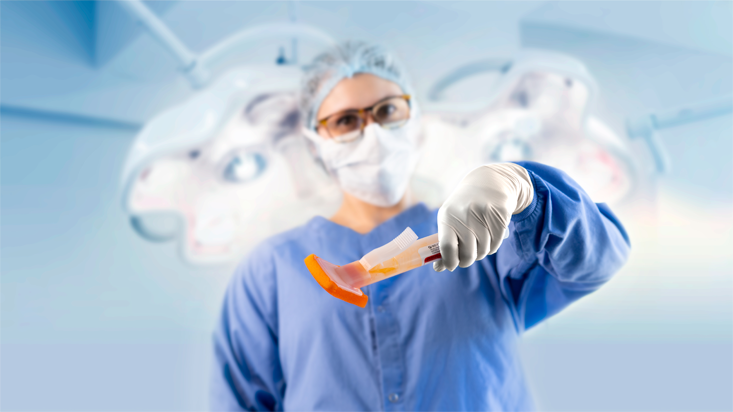1. Beausoleil C, Comstock SL, Werner D, Li L, Eby JM, Zook EC. Antimicrobial persistence of two alcoholic preoperative skin preparation solutions. J Hosp Infect. 2022 Nov;129:8-16.
2. Hemani ML, Lepor H. Skin preparation for the prevention of surgical site infection: which agent is best? Rev Urol. 2009 Fall;11(4):190-5
3. Denton GW. Chlorhexidine. Disinfection, sterilisation, and preservation. (Edited by S.S. Block, 4th ed) Philadelphia: Lea & Feabiger. 1991. pp. 322–333.
4. Mangram AJ, Horan TC, Pearson ML, Silver LC, Jarvis WR. Guideline for Prevention of Surgical Site Infection, 1999. Centers for Disease Control and Prevention (CDC) Hospital Infection Control Practices Advisory Committee. Am J Infect Control. 1999 Apr;27(2):97-132
5. 2021 AORN Guidelines for Perioperative Practice: Patient Skin Antisepsis
6. WHO 2016 Global guidelines for the prevention of SSIs fact sheet https://cdn.who.int/media/docs/default-source/integrated-health-services-(ihs)/ssi/fact-sheet-skin-web.pdf?sfvrsn=ead06f37_2#:~:text=Surgical%20site%20skin%20preparation%20is,the%20operating%20room%20(OR).
7. Ban KA, Minei JP, Laronga C, Harbrecht BG, Jensen EH, Fry DE, Itani KM, Dellinger EP, Ko CY, Duane TM. American College of Surgeons and Surgical Infection Society: Surgical Site Infection Guidelines, 2016 Update. J Am Coll Surg. 2017 Jan;224(1):59-74
8. Berríos-Torres SI, et al; Healthcare Infection Control Practices Advisory Committee. Centers for Disease Control and Prevention Guideline for the Prevention of Surgical Site Infection, 2017. JAMA Surg. 2017 Aug 1;152(8):784-791.
9. Yokoe DS,,et al; Society for Healthcare Epidemiology of America (SHEA). A compendium of strategies to prevent healthcare-associated infections in acute care hospitals: 2014 updates. Infect Control Hosp Epidemiol. 2014 Aug;35(8):967-77.
10. AORN. Perioperative Standards and Recommended Practices. Denver, CO: AORN, Inc.; 2013:75-89.
11. Galvin P. Am J Nurs. 2009;109(12):49-55. doi: 10.1097/01.NAJ.0000365187.47124.c0.
12. Karpanen TJ, et al. Antimicrob Agents Chemother. 2009;53(4):1717-1719. doi:10.1128/AAC.01289-08.
13. Gilbert, P. and Moore, L.E. (2005), Cationic antiseptics: diversity of action under a common epithet. Journal of Applied Microbiology, 99: 703-715
14. Trautner, B. Skin antisepsis kits containing alcohol and chlorhexidine gluconate, or tincture of iodine are associated with low rates of blood culture contamination. Infection Control and Hospital Epidemiology, 2002.
15. Chen YE, Tsao H. The skin microbiome: current perspectives and future challenges. J Am Acad Dermatol. 2013 Jul;69(1):143-55.
16. Hendley JO, Ashe KM. Antimicrob Agents Chemother 1991 627-31
17. https://www.fda.gov/drugs/drug-safety-and-availability/questions-and-answers-fda-requests-label-changes-and-single-use-packaging-some-over-counter-topical
18. Chang C, Furlong LA. Microbial stowaways in topical antiseptic products. NEngJMed. 2012;367;23:2170-2173. doi: 10.1056/NEJMp1212680.
19. Weber DJ, Rutala WA, Sickbert-Bennett EE. Outbreaks associated with contaminated antiseptics and disinfectants. Antimicrob Agents Chemother. 2007;51(12):4217-4224.
20. Berger SA. Pseudobacteremia due to contaminated alcohol swabs. J Clin Microbiol. 1983;18 (4): 974-975.
21. Edmiston CE Jr, Griggs RK, Tanner J, Spencer M, Seabrook GR, Leaper D. Perioperative hair removal in the 21st century: Utilizing an innovative vacuum-assisted technology to safely expedite hair removal before surgery. Am J Infect Control. 2016 Dec 1;44(12):1639-1644.
22. Redelmeier, DA, Livesley NJ. Adhesive tape and intravascular-catheter-associated infections. J Gen Intern Med. 1999;14(6):373-375
23. AORN. AORN Guidelines for Perioperative Practice. 2015. Retrieved on May 20, 2016 at https://www.aorn.org/guidelines
24. Data on File
25. 2009 WHO Hand Hygiene Guidelines



